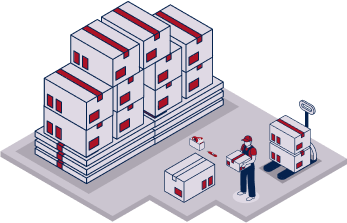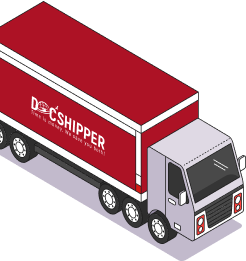Freight Packaging Services for Imports & Exports from Vietnam
Subheading: Protect your cargo with professional packaging that meets international standards. Whether shipping by sea, air, or road, FNM Vietnam ensures your goods are safe, compliant, and ready for transport.
Packaging: A Critical Step in International Shipping
Proper packaging is essential when importing or exporting goods to or from Vietnam. Whether you're sending household items, industrial machinery, or fragile goods, FNM Vietnam ensures that your shipments are packed securely, minimizing the risk of damage, delays, or rejections. Here's why it's so important:
- Cargo Security: Proper packaging drastically reduces the risk of breakage, loss, and delays during transport.
- Insurance Compliance: Many insurers will deny claims if packaging doesn’t meet international standards. Our packaging guarantees your goods are fully covered.
- Regulatory Approval: Customs often block non-compliant shipments. Proper packaging ensures your goods clear customs smoothly, avoiding unnecessary delays.

Our Professional Freight Packaging Services
At FNM Vietnam, we offer tailored packaging solutions to meet the specific needs of your shipment, whether it’s for sea freight, air freight, or road transport. Our packaging services include:
Custom Packaging Solutions
Whether it’s fragile electronics, large machinery, or personal items, we design packaging that ensures the safety of your goods during transit.

Insurance-Ready Packaging
Our packaging meets all required international standards, ensuring your goods are covered by insurance in case of damage, loss, or theft during transport.
Flexible Options
We provide quick packing services for urgent shipments, or more specialized care for sensitive items requiring export-grade materials.
End-to-End Support
We handle everything—from packing and palletizing to crating, labeling, and ensuring compliance with international standards.
How to pack by yourself? The step by step
Here’s a step-by-step guide to what we do to make sure your goods are packed properly:
Organize your packing space and begin the process early. Good planning helps prevent delays and damage.
Clearly mark your cartons with destination, contents, and fragile labels. This helps customs officers and handlers to handle your shipment efficiently.
This mandatory document ensures smooth customs clearance and is essential for insurance claims.
Place heavy items at the bottom, fragile goods wrapped and cushioned, and use padding to fill empty spaces.
For hazardous materials, oversized cargo, or valuable goods, always rely on certified professionals like FNM Vietnam to handle the packaging.

FAQ - Freight Packaging Services
Proper packaging protects your goods during transit, ensures compliance with customs regulations, and is critical for insurance claims. Poor packaging can lead to delays, damage, or customs rejection.
The cost depends on the size, nature, and transport method of your shipment. Contact us for a detailed quote based on your specific needs.
The choice depends on the type of product and the mode of transport. Our team will advise you on the best solution based on your shipment’s requirements.
Yes, packaging is mandatory to ensure the safe transit of your goods. It also ensures compliance with international shipping standards and customs regulations.
If your goods are packaged according to FNM Vietnam standards, your shipment is covered by insurance, ensuring you can file a claim for compensation if damage occurs.
Ask Questions.
Get clear answer.
Not sure if it’s the right solution or have doubts in mind? No problem—just ask us. We’ll guide you honestly, no commitment required.



